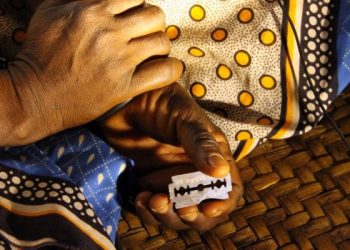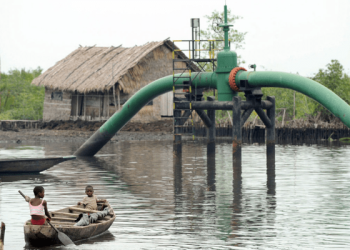With the recent disclosure by Dr Jide Idris, the Lagos State commissioner for Health, that the state government had placed Ahmmadiyyah Hospital, Ojokoro, where the patient with the first Lassa fever virus case was first admitted, under surveillance, Lagos recorded its first official case of the disease. According to Idris, 15 in-patients and other 25 health workers in the facility have been put under observation.
He confirmed that the disease was contacted by a 25 year old male, undergraduate student of the Ahmadu Bello University (ABU), Zaria, Kaduna State, and that from Ahmmadiyyah Hospital he was referred to the Lagos University Teaching Hospital (LUTH). The Lagos State government is making efforts to stem the tide of the disease. Presently, isolation centres have been provided to handle suspected and established cases, while enlightenment campaigns, using the electronic media and information leaflets, by the medical directors of Lagos State University Teaching Hospital (LASUTH) and 26 general hospitals in the state have been stepped up. Similarly, the Mainland Hospital and all other general hospitals in the state have been placed on the alert and anti-viral drugs for the management of Lassa fever cases made available. Ambulances have been dedicated to respond to referral and transportation of cases. Also, the Disease Surveillance and Notification Officers (DSNOs) in all the local government areas in the state have been sensitized on Lassa fever to enhance early detection and prompt reporting of cases.
The state government is also collaborating with the Federal Ministry of Health, Virology Reference Laboratory, College of Medicine, University of Lagos and World Health Organisation in the prevention and control of the disease. Lagos residents are advised to keep away from rats and report any case of persistent fever to the nearest public health facility. They are to also shun ingestion of foods and drinks infected by the saliva, urine and faeces of infected rats as well as catching and preparing infected rats as food. They are also told to avoid inhaling small particles in the air contaminated with infected rat urine or droppings. Getting directly in contact with an ailing person’s blood or body fluids, through mucous membranes, like eyes, nose or mouth, should also be avoided. Above all, residents should embrace faultless personal and environmental hygiene. Other states with reported cases of Lassa fever include Bauchi which recorded the first case in November, 2015, Nassarawa, Niger, Taraba, Kano, Rivers, Edo, Plateau, Gombe, Osun, Ondo, Lagos and Oyo states.
Till date, the disease has claimed the lives of about 101 people with not less than 175 confirmed and unconfirmed cases. Lassa fever, a hemorrhagic disease was named after Lassa village in Borno State, where it was first discovered in 1969. The disease occurs more in the dry season. It is caused by a species of rodents called the Natal multimammate rat, the common African rat, or the African soft-furred rat. The Lassa virus is transmitted when the droppings (urine or faeces) of the rat, the vector the virus, comes in contact with foodstuffs, either in silos or in residences. The rodents live in houses with humans and deposit excreta on floors, tables, beds and food. Consequently the virus is transmitted to humans through cuts and scratches, or inhaled via dust particles in the air. In some regions, these rodents are also consumed as food. Secondary transmission of the virus between humans occurs through direct contact with infected blood or bodily secretions.
This occurs mainly between individuals caring for sick patients, although anyone who comes into close contact with a person carrying the virus is at risk of infection. Nosocomial transmission, that is the transmission that occurs as a result of treatment in a hospital and outbreaks in healthcare facilities in endemic areas, represent a significant burden on the healthcare system. In the early stages, Lassa fever is often misdiagnosed as common cold, typhoid or malaria, and as a result many patients fail to receive appropriate medical treatment. Making a correct diagnosis of Lassa fever is made difficult by the wide spectrum of clinical effects that manifest, ranging from asymptomatic to multi-organ system failure and death.
The onset of the illness is typically mild, with no specific symptoms that would distinguish it from other febrile illnesses. In 80 percent of cases, the disease is without symptoms but in the remaining 20 percent, it takes a complicated course. It has an incubation period of six to 21 days after which an acute illness develops. Early signs include fever, headache and general body weakness, followed by a sore throat, nausea, vomiting, abdominal pain and diarrhea in some cases. Death from Lassa fever most commonly occurs 10 to 14 days after symptom onset. Non-specific symptoms are facial swelling, and muscle fatigue, as well as conjunctivitis and mucosal bleeding. And one of the hallmarks of Lassa virus infection is the absence of functional antibodies during acute infection. Bakare is of the Features Unit, Lagos State Ministry of Information & Strategy, Alausa, Ikeja













































